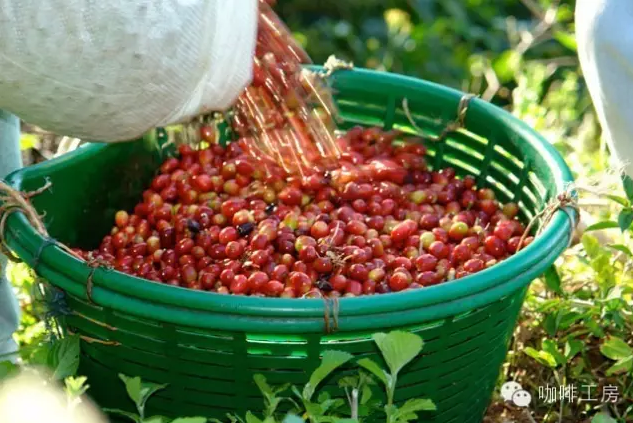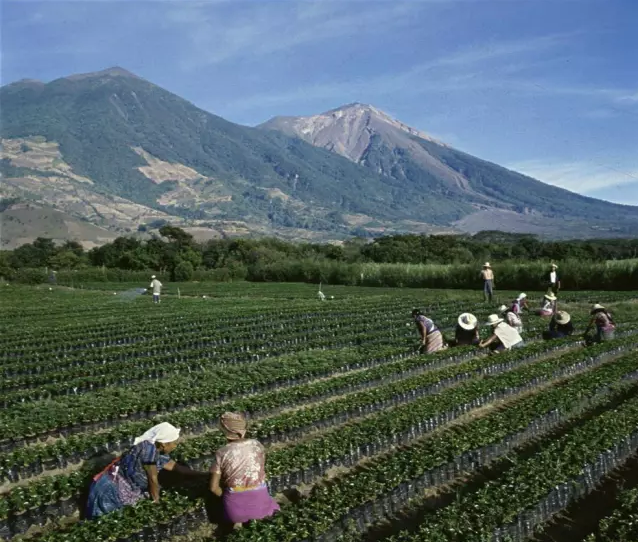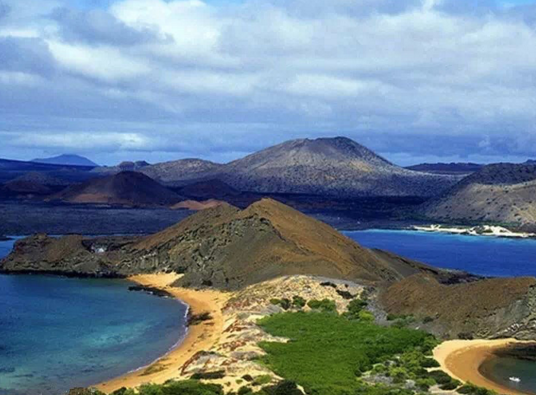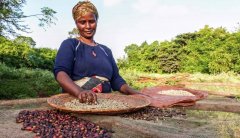Determined supporter of Deep Baking Culture-Jamaican Blue Mountain Coffee
Super Blue Mountain Coffee

Details:
◆ Origin: Caribbean & Central America
◆ baking method: City Roast
◆ characteristics: mellow and full aftertaste
◆ selects Central American high-altitude coffee beans whose flavor properties are similar to those of pure Blue Mountain Coffee, blends coffee from Jamaican Blue Mountain Coffee producing areas, and uses City Roast for special baking design, which is very similar to pure Jamaican Blue Mountain Coffee in terms of flavor and taste.

Gold Super Blue Mountain Coffee
◆ Origin: Jamaica, Caribbean & Central America
◆ baking method: City Roast
◆ characteristics: Jamaica Blue Mountain and other beans mix, the flavor is better, comparable to Alpine Blue Mountain
The market often confuses the public with beans that look like Blue Mountain Coffee, and sometimes even call themselves Blue Mountain Coffee with huge coffee beans. In fact, pure Blue Mountain coffee beans are only slightly larger than ordinary coffee beans. How should consumers choose and buy them? There is only a careful choice of reputable coffee manufacturers; of course, its price is much higher than other coffee, and the prices of different coffee manufacturers are also very different, but consumers should not blindly measure it by price. It is not that the higher the price, the better or purer the coffee is, otherwise you will be wronged if you spend a lot of money.
Charcoal roasted super blue mountain coffee
◆ Origin: Jamaica, Jamaica
◆ baking method: City Roast
◆ features:
1. Palate: slightly sour, supple, sweet and smooth.
two。 Fragrance: fragrance.

3. Vision: coffee beans are slightly larger than ordinary coffee beans, with a smooth surface and high hardness.
Jamaica Prime Washed, Jamaica's main coffee producing area of St. Angel (St.Andrew), which is more than 6000 feet above sea level, produces about four to six times more than No.1, and the price is also on the high side. It is also Blue Mountain Coffee, but it cannot be named directly after No.1. Even so, there are still many international professional buyers who specialize in purchasing this series of products. Some of the more famous coffee estates are still sold out by coffee connoisseurs before the harvest season. The higher the altitude, the better the quality of coffee beans, the more mellow the taste, the fullness of particles, the round fruit aroma, mild acid, sweet and bitter. It is the best of many coffee gluttons.
Important Notice :
前街咖啡 FrontStreet Coffee has moved to new addredd:
FrontStreet Coffee Address: 315,Donghua East Road,GuangZhou
Tel:020 38364473
- Prev

One of the two largest coffees in the world, Ye Jia Xue Fei, a lively and elegant lady
Ethiopia OCR Reko Country Ethiopia Kochere producer Local smallholder Grading Grade 3 treatment Sun-cured species Mixed indigenous species Heirloom 1850 to 2100 m Introduction: In 2007, Trabocca Dutch traders launched the Red Cherry Project, both washed, semi-washed and sun-cured
- Next

How to determine the five factors affecting the flavor of coffee beans during the cultivation period of coffee beans
The five variants that affect the ripening of coffee beans are not the best cooking state after being roasted out of the oven. It takes a period of time for the taste and flavor to mature and wait for the mature stage, which is commonly known as "raising beans" or "ripe" coffee beans taste fuller, more complete and easier to boil during the peak exhaust period.
Related
- Beginners will see the "Coffee pull flower" guide!
- What is the difference between ice blog purified milk and ordinary milk coffee?
- Why is the Philippines the largest producer of crops in Liberia?
- For coffee extraction, should the fine powder be retained?
- How does extracted espresso fill pressed powder? How much strength does it take to press the powder?
- How to make jasmine cold extract coffee? Is the jasmine + latte good?
- Will this little toy really make the coffee taste better? How does Lily Drip affect coffee extraction?
- Will the action of slapping the filter cup also affect coffee extraction?
- What's the difference between powder-to-water ratio and powder-to-liquid ratio?
- What is the Ethiopian local species? What does it have to do with Heirloom native species?

